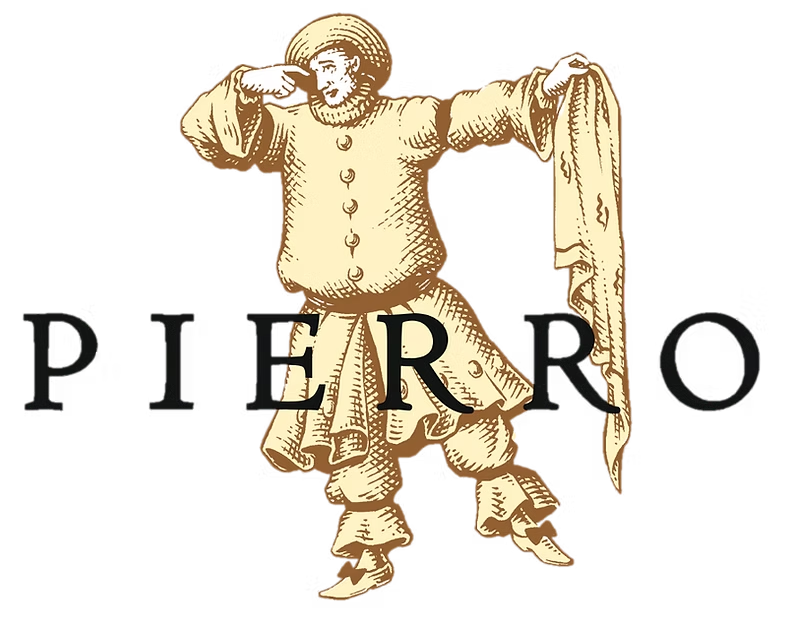Australia's best Semillon Sauvignon Blanc
Nic Peterkin

The Pierro L.T.C. (Little touch of Chardonnay)
We are often asked, what's the most important element when making wine?
Some would say the date you pick or the site itself but truth be told, there isn't one factor in making great wine. There are over one hundred little things, and if done correctly completely change the taste and feel of the wine. In the late 70's Dr Michael Peterkin made the first Semillon Sauvignon Blanc in Australia. Not claiming originality for the idea, just applying what the French had previously done with the varieties in Bordeaux and bringing the blend to Margaret River. Over the last 30 years the Pierro L.T.C. has become an icon in Australian wine. So how is it made? What are the essential steps in the vineyard and winery that make this wine stand out from its peers?

Before vintage occurs there are many choices that occur in the vineyard, pruning choices, compost, weed management, training the vines. All of this is done by hand at Pierro. As vintage draws closer and the fruit becomes ripe Dr Mike Peterkin walks the vineyard tasting grapes. We both taste the grapes and conduct analysis on ripeness and acidity in the winery to determine when the wine will be balanced and flavoursome. Too early and the grapes don't have flavour with too much acidity dominating the palate. Too late and they have high alcohol and no acid. When a picking date has been decided for a certain variety and vineyard, the word goes out to the picking team.
Hand-picking. All of the grapes at Pierro are picked by hand. This is a craft that is normally only reserved for the top wines of an estate. At Pierro we treat all of our wines with the same care. Hand picking is much more gentle than machine harvesting. Pickers select only the best fruit and leave any damaged fruit. We pick into 10kg buckets so the fruit won't crush under its own weight.
The photo below shows a perfect bunch on the left and a bunch damaged by weevils on the right. By hand picking we can leave the damaged fruit in the vineyard.

Once the fruit is hand picked it is transported into the winery in the same buckets it was picked into. This is done to avoid double handling of the fruit, further reducing any damage to the grapes. The fruit is then chilled overnight to five degrees before being bunch sorted.
Chilling the fruit is another essential step often overlooked at commercial wineries. Keeping the fruit cool retains aromas and reduces oxidative reactions and also reduces phenolic bitterness.
Bunch sorting takes place with a minimum team of 6 people. The rule to new people working on the sorting table is: "If you wouldn't eat it throw it out"

The bunches are tasted and it's fantastic to be able to see the quality of the harvest across the table. In a good year with 4 tonnes of fruit we take out 40kg. Mostly leaves, insects and a few odd bunches. It's only 1% but it's important. In difficult years that are wet or when birds are hungry this number can reach 200kg (5%). There is an old saying in wine to judge a vineyard and a winery by the difficult vintages not the good ones. Anyone can make wine in a good year. To craft consistently high quality wine, even in the tough years, requires attention to detail and processes like this.

Above gives an indication of the fruit and leaves that are taken out on the sorting table. So that only the highest quality fruit makes it into the finished wine. All of the white fruit at Pierro is whole bunch pressed cold in a champagne airbag press over a 3 hour time period, very gently. The juice is left to settle for 24 -48 hours prior to the clear juice being taken from the sediment and fermented in seperate batches.

The wine is fermented in a combination of oak and stainless steel using temperature control to maintain healthy ferments. We use a combination of different yeasts to build complexity in the wine. Once the wine has finished fermentation it is left to settle and mature in vessel prior to blending and bottling. The LTC sees a combination of stainless steel and oak maturation. The combination builds complexity in the final wine. Oak giving texture and stainless steel providing aromatics.

We guess if you have read this far you may be thinking, why are they telling us all their secrets? Surely someone could read this and copy exactly what we do and make a wine of similar quality. There are two reasons that we can write this and sleep easily. Firstly, time and money. It's sad, but most wineries are looking at every way they can to reduce costs and make the process of making wine more efficient and cheaper. The focus isn't on making the best wine possible it's on making the cheapest wine possible thats 'good enough' Secondly terroir. We apply this level of detail at vintage so that the wines express the unique terroir of where the grapes are grown. With the exact same method used above with another site the wine would taste very different. There are an addition 100 steps in the vineyard that are applied to get the fruit to an optimal level. At the end of the day it takes a team dedicated to achieving quality and making the best wine they can. A team that spends the extra time to apply their craft because they are driven to make the best wines in Australia.
















